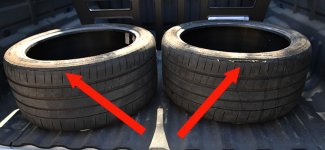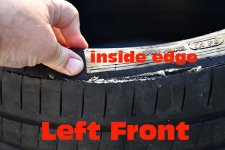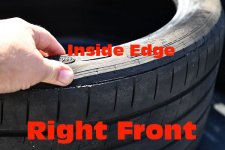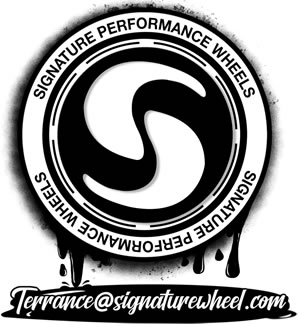Wow. Just looked at the date of your post. Guess I haven't been on my Blog for a while. Sorry bout that.
As for the XT4, well...since I'm really not a CUV kinda guy I have no strong opinion one way or the other except to say I hope Cadillac has a better handle on quality with the XT4 than they did with our two ATS-Vs.
The last several months, I've been so busy with Corvette situations–my 2012 has chronic problem with the Katech engine I put in it a year and half ago and we considered, then negotiated, and ordered, then, finally, took a Museum Delivery, of a 2019 ZR-1 and road-tripped it home to California–I haven't posted to the Little V Blog in a long time.
I've been driving my ATS-V Coupe as my daily driver. In DD service, that car works out pretty well. I still really like the looks of an ATS-V with the Track Package. I'm one of the people who likes the ATS-V's instrumentation. I've accepted the 2016 version of CUE–it is what it is. One thing I've grown to like are the fold down rear seats, which are standard on the Coupe but optional on the Sedan. The cheapskate I am, we didn't order them on our other ATS-V, a four-door. In the Coupe those folding seats have come in handy in bringing some purchases home form Home Depot or Costco and it's also been useful on a few road trips we've taken.
I have fun with the car's relatively low gearing, 3.73s and a 2.66 first gear. That makes the car a rocket ship in highway onramps which are two cars wide and there's a BMW, Audi, Benz or some millennial in a slammed ricer in the other lane.
But, then, as much as I like looking at and driving my ATS-V, the quality problems with the car and GM's poor response to warranty claims continue to making me and my little -V a "love-hate" relationship. A month ago, I had to have the CUE touch-screen replaced because it went "bonkers"–the radio preset display would start "vibrating" and would not respond to any touch. So, now the screen in both our ATS-Vs have needed replacement and there are lots of other cases where ATS touch screens have failed. That's ridiculous for a compact coupe costing upwards of 60-large.
Worse, yet, the car has a growing problem with oil smoke out the exhaust right after cold starts. If you are a regular reader of the Little V Blog, you know our other ATS-V, an early production Sedan, had a long-standing problem with that which prompted GM to replace, first, the cylinder heads, then, both turbos and, finally, the complete engine.
My coupe is now doing the smoke-after-start "thing" on a regular basis. I've been to my dealer, Bunnin Cadillac in Santa Barbara CA, twice about this and GM has taken no action so far. This is not a problem with the people at Bunnin which have done their best for me. With today's GM, dealers have little discretion or decision-making power on warranty issues. It's GM's Technical Assistance Center (TAC) which is often bureaucratic and and regularly in denial that a problem exists and, all-too-often, in my opinion, deaf to customer satisfaction issues.
The problem which causes this short duration oil smoke after cold starts lies with the turbocharger shaft seals and I'm not making this stuff up, either. Go back in this Blog to the discussion of this oil smoke problem with our ATS-V Sedan. In post #251 you'll find pictures which document the trouble.
A turbo-supercharger has a turbine wheel, which is driven by exhaust flow, and a compressor wheel, which compresses the intake charge, on a common shaft. On the turbine side of the turbo, when the engine is running, if the seal on that end of the shaft is faulty, exhaust pressure keeps oil from leaking. After engine shutdown, because the turbocharger shaft is one of the lowest parts of the engine's pressure lubrication system, oil remains in the cavities through which engine oil flows to the shaft bearings and oil above that creates a small amount of head pressure. If the turbine shaft seal is faulty, there will be gravity-flow of oil past that seal. From there, oil migrates to the turbine wheel and, if there's enough of it, drips off the turbine into the turbocharger compressor housing, then pools in the bottom of that housing–again, see the pictures referenced above.
The next time the engine is started, within seconds, exhaust heat burns that oil away and the customer, in this case, me, sees a cloud of oil smoke which blows out the exhaust pipes for several seconds. Depending on how much oil has leaked past the seal during the time the engine was not running, this can be a little oil smoke or a huge cloud of of it–trust me, I've seen both plenty of times.
When a dealer contacts TAC asking for its blessing on a warranty repair for this problem, TAC, which, IMO, seems to have a lot of people who don't know much about cars and/or just don't listen, usually responds, regardless of what details the dealer gives them about the customer's problem, by telling the dealer to begin a "Measurement of Oil Consumption" according to GM Information Bulletin 01-06-01-011J or whatever current revision of that bulletin which is in force at the time.
The problem with this type of oil use problem and GM's "Measurement of Oil Consumption" procedure is that, while the duration of the oil consumption might only be 10-20 seconds but can make a huge cloud of oil smoke, the actual oil consumption over the 2000-mi distance mandated by the procedure will be minimal because the only time oil is consumed is the 10-20 seconds after start-up. For the rest of that ignition cycle, oil use will be normal–which of course is minimal. In fact, you could have a car that blows oil smoke every time the engine is started but which GM would never fix because, given an engine that has only a start-up smoking problem due to a leaky turbo shaft seal, it would not use more than a quart of oil in that 2000-mi test which is the minimum oil use for which GM will normally take action.
Back to my Coupe's smoking cold start problem: GM told TAC to start an oil consumption test which means, unless I take some other kind of action, the wizards at the Technical Assistance Center will never do anything to fix the freakin' car.
Some might suggest: get the dealer to contact their GM "Rep". Problem with that is: long-gone are the days when the GM representatives who work in the field with dealers had a lot of discretion in matters of warranty administration and customer satisfaction. The way things work between GM Reps and dealers nowadays isn't much better than how things work between dealers and TAC.
So where does that leave ATS-V owners? Well...we're stuck with cars we love to drive but suffer from a lot of quality issues and are warranted by a company which has lost sight of what makes up good customer satisfaction.
Crappy quality and a arduous process customers have to endure in getting GM to process warranty claims is one reason Cadillac has become a second tire luxury brand sucking hind tit to Mercedes, BMW and Lexus.

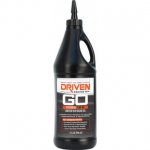
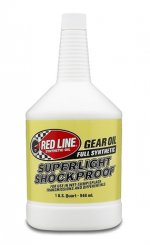
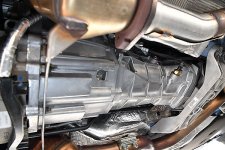
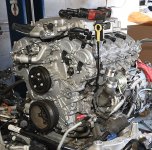
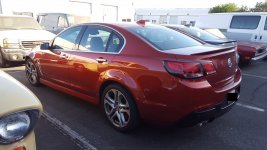
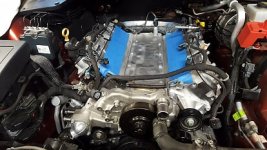
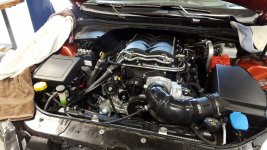
 : (you can't make this s**t up), last Friday morning, I'm driving back home from a visit to Bunnin Cadillac to discuss my Wife's four-door. I get on the 101 freeway headed west and, about a mile later, the LTPWS light comes and I see the left-front tire is down to 24-psi. As I'm driving along, the pressure is dropping, ie: there's a big-ass leak. I didn't even make it home. About five miles short, the tire is at 10-psi so I pull off the freeway into a Chevron station. Strangely, they don't do tire work and point me towards their air hose. Trying to add air doesn't work as I can hear a huge leak in the inside of the tire. There's no spare (obviously) and the inflation kit is not going to fix this big leak. I call a local towing service and had them disptach a roll-back.
: (you can't make this s**t up), last Friday morning, I'm driving back home from a visit to Bunnin Cadillac to discuss my Wife's four-door. I get on the 101 freeway headed west and, about a mile later, the LTPWS light comes and I see the left-front tire is down to 24-psi. As I'm driving along, the pressure is dropping, ie: there's a big-ass leak. I didn't even make it home. About five miles short, the tire is at 10-psi so I pull off the freeway into a Chevron station. Strangely, they don't do tire work and point me towards their air hose. Trying to add air doesn't work as I can hear a huge leak in the inside of the tire. There's no spare (obviously) and the inflation kit is not going to fix this big leak. I call a local towing service and had them disptach a roll-back.